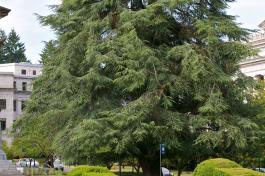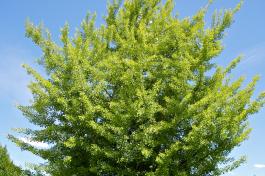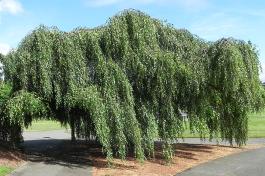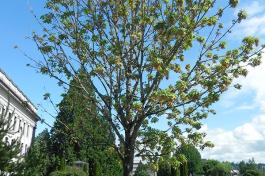Western Red Cedar
Thuja plicata
Learn about the western red cedar including when and why it was planted, how to identify it, and where to find it on campus.
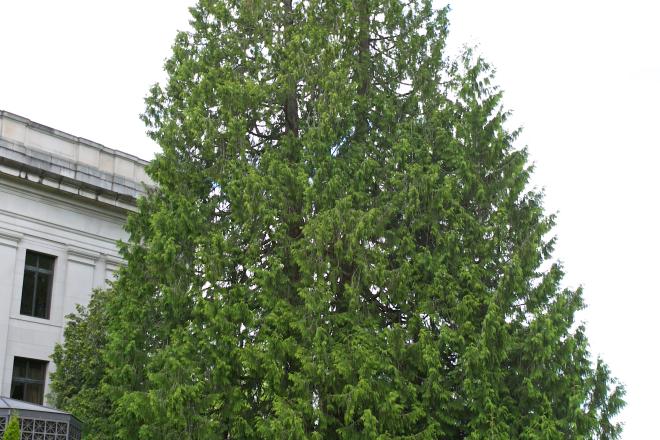
Tree Facts
Traits
- Fragrant lightweight wood
- Flat branches with bright green, scale-like foliage
- Produces large amounts of small cones
- Stringy, reddish brown bark
- Hanging branches
Native Range
- Coastline to the Cascade mountains
- Rocky Mountains (northern only)
Story of the Tree
At the northeast corner of the Insurance Building is a native cedar. This towering cedar stood on the Capitol Campus before the buildings were erected in the 1920s.
Cedar trees are important to the indigenous peoples of the Pacific Northwest, who use its bark to weave mats and baskets and its trunks to carve canoes capable of carrying many warriors across Puget Sound.
This native cedar tree is not technically a cedar; botanically, it's the world's largest type of arborvitae – a popular and attractive evergreen tree that is commonly used in landscaping.
The western red cedar tree located at the Eastern Washington Cultural Landscape Feature area is dedicated to the memory of Mark Doumit. Doumit joined the Washington House of Representatives in 1996, where he became chairman of the House Natural Resources Committee. In 2002, he was appointed to the Senate in 2002 to fill the term of Sid Snyder. He served in the Senate until 2006.


